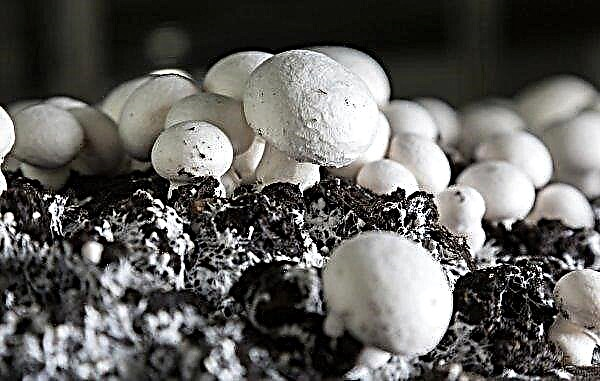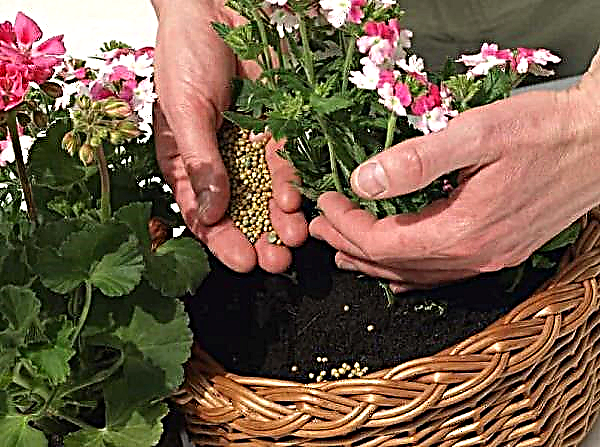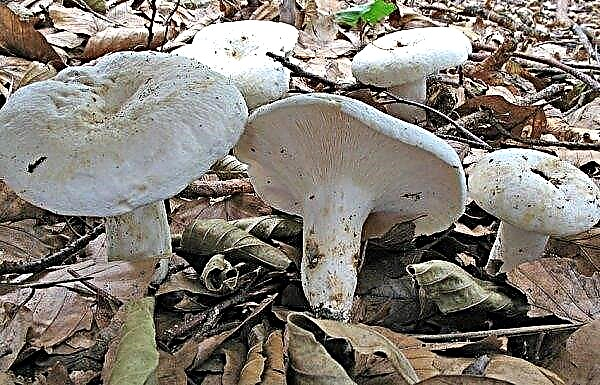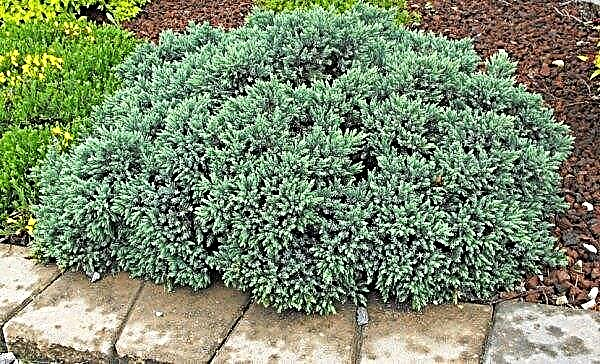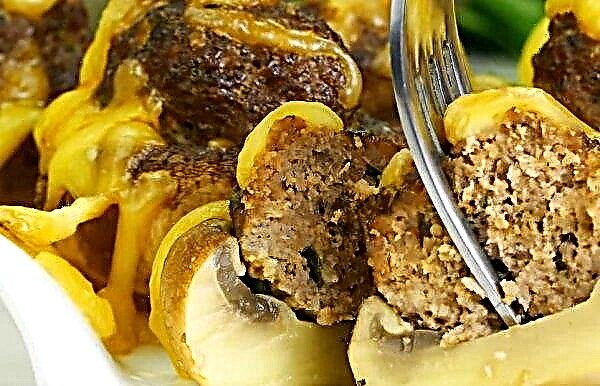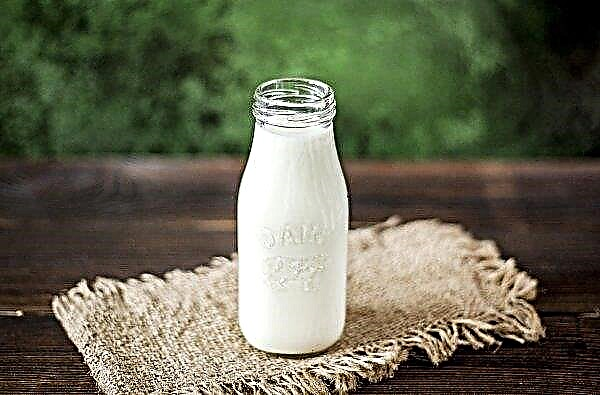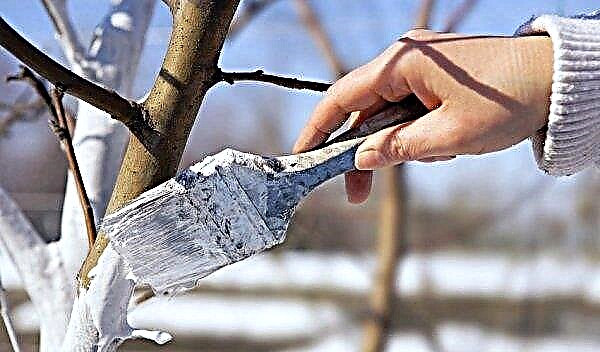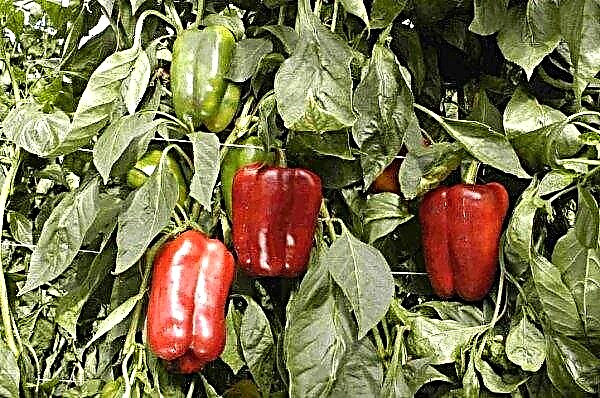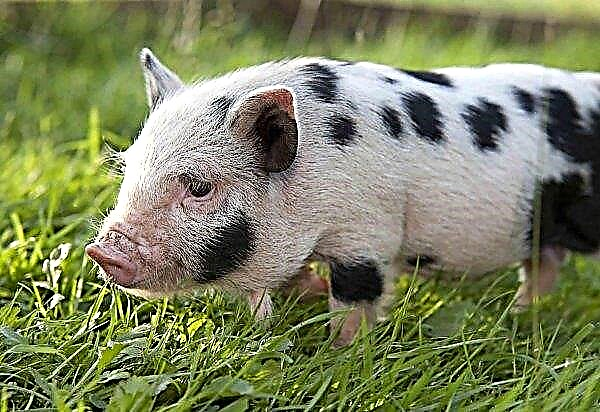Watermelon is a favorite culture of all, which can differ in color, shape and taste. What it looks like, to which family it belongs and how watermelon is properly cultivated, read below.
Did you know? The largest watermelon weighing 159 kg was grown by an American farmer Chris Kent and entered in the Guinness Book of Records in 2013.
Botanical description of watermelon
It is believed that these fruits were spread worldwide from South Africa, where the wild melon tsamma (tsamma melon) is still found in the Namib desert, which helps quench the thirst for the bushmen living in these parts, as well as wild animals and birds. And although this fruit is called melon, it looks like a small watermelon with a green striped peel. The pulp of the fruit is white, with dark seeds similar to the seeds of ordinary watermelons. The ancient Romans already ate watermelon as food, as evidenced by written sources that have come down to our times. The poet Virgil described the culture and narrated a wide range of its application in a fresh and salted form. What watermelon is on the territory of modern Russia was learned in the VIII century thanks to merchants from India who brought these exotic fruits for trade. The culture became widespread only in 1660, when, by decree of Tsar Alexei Mikhailovich, the berries were planted on the palace lands in Astrakhan.
The ancient Romans already ate watermelon as food, as evidenced by written sources that have come down to our times. The poet Virgil described the culture and narrated a wide range of its application in a fresh and salted form. What watermelon is on the territory of modern Russia was learned in the VIII century thanks to merchants from India who brought these exotic fruits for trade. The culture became widespread only in 1660, when, by decree of Tsar Alexei Mikhailovich, the berries were planted on the palace lands in Astrakhan.
Important! The permissible nitrate content in watermelon pulp is 60 mg per 1 kg.
To this day, scientists continue to argue about what type of fruit a watermelon belongs to. To this day, botanists around the world have not come to an agreement, is it a fruit, a vegetable, or a big berry. The most common opinion is that the watermelon fruit can be considered a berry, since it belongs to the Pumpkin family and is a pumpkin, which, in turn, is a false berry. Watermelon is an annual herb with a curly stem.
Fruits come in different shapes:
- round;
- oval;
- cylindrical.
 Most often, the peel of these berries is painted in a yellow-green strip, and dark green or even almost black color is also found. The pulp is predominantly pink or red, but there are also outlandish specimens with a yellow or white core. The culture has a branched system of flexible stems, which grow in different directions, reaching a length of 4 m. Leaf plates - on long stalks, have a triangular shape, hard to the touch with a rough surface.
Most often, the peel of these berries is painted in a yellow-green strip, and dark green or even almost black color is also found. The pulp is predominantly pink or red, but there are also outlandish specimens with a yellow or white core. The culture has a branched system of flexible stems, which grow in different directions, reaching a length of 4 m. Leaf plates - on long stalks, have a triangular shape, hard to the touch with a rough surface.Important! Children under the age of 5 years, a single dose of watermelon should not exceed 150 g, in order to avoid overloading the stomach.
The leaf is divided into 3 lobes, the middle one is slightly elongated. The system of organs of seed reproduction is presented in the form of a yellow flower, with bracts of a boat-shaped form. Stamens are single, with a diameter of 3 cm, the upper part of the flower is wide. The rhizome has a branched, filiform structure, reaches a depth of 1 m and grows in breadth to 50 cm.
The chemical composition of watermelon
The calorie content of striped berries per 100 g of product is 27 kcal. The content of nutrients in 100 g of pulp:
- proteins - 0.7 g;
- fats - 0.1 g;
- carbohydrates - 5.8 g;
- water - 92.6 g;
- dietary fiber - 0.4 g.

Trace elements that make up the watermelon:
- calcium;
- potassium;
- magnesium;
- zinc;
- manganese;
- iodine;
- iron.
In addition, the fruit contains B vitamins, is rich in folic and ascorbic acids.
Did you know? The idea to grow square watermelons appeared in Japan in 1980, when local agronomists decided to facilitate the transportation and preservation of spherical fruits.
Watermelon Properties
Due to the high content of B and C vitamins, these fruits are indispensable in the human diet. Daily consumption of pulp in the amount of 150 g for 2 weeks will help strengthen immunity and for a long time enrich the body with vitamins and minerals.
Benefit
- Eating watermelon has great benefits for human health:
- increases the body's resistance to colds;
- helps to remove excess fluid from the body;
- removes accumulated toxins and toxins;
- due to the presence of folic acid is useful in bearing a child;
- useful for colds as an antipyretic, and also protects the body from dehydration.
Contraindications and possible harm
- However, it has a striped berry and a number of contraindications:
- personal intolerance to the components that make up the fetus;
- with urethritis due to the diuretic effect when drinking watermelon;
- with urolithiasis, if the stones are large;
- with diarrhea;
- contraindicated in colitis.
When watermelon poisoning, the following symptoms may occur:
- nausea;
- vomiting
- diarrhea;
- drowsiness;
- pallor of the skin.
Types of Watermelons
The types of these berries differ in structure, in what color their pulp is and how they grow in open ground. Below you can find out what types of fruits are cultivated on melons:
- colocynt;
- ordinary watermelon;
- square.
Colocint
Kolotsint is a perennial herbaceous culture, winding on the ground and having an elongated antennae. The fruits of a spherical shape reach a weight of about 500 g. The peel of a ripe fruit is yellow in color, the soft part is white and grainy. The main area of use of colocint is medicine, and cooking is of secondary importance. Typically, this fruit is used to make drugs that help with liver dysfunction and constipation. Use in the culinary art is possible only with strict adherence to the proportions, because the colocint is quite toxic and, if used improperly, can provoke poisoning. For cooking, oil obtained from seeds of the culture is also used.
Typically, this fruit is used to make drugs that help with liver dysfunction and constipation. Use in the culinary art is possible only with strict adherence to the proportions, because the colocint is quite toxic and, if used improperly, can provoke poisoning. For cooking, oil obtained from seeds of the culture is also used.
Ordinary
This type of watermelon is familiar to everyone. General characteristics of the fetus:
- the berry has a mottled skin color, presented in the form of stripes of different shades of green and yellow;
- seeds are flat, have a brown color;
- the pulp is very juicy, sugary.

Square watermelon
The square shape of the pumpkin is the result of skillfully growing an ordinary watermelon. To achieve the desired shape, in the early stages of ripening, the fruits are placed in square or rectangular boxes. Growing in size, watermelons fill the whole box with themselves and get the desired shape.
Rating of the best varieties of watermelon
The most commonly grown varieties of watermelons:
- Astrakhan. It is a mid-season crop that gains weight up to 10 kg. The pulp is red, sugar. The peel is thickened, has bright yellow stripes on a green background.

- Light Early ripening, unpretentious in cultivation. It is famous for its high yield and granular structure of pulp.
 The peel has a dark, almost black color, weight reaches 2 kg, a spherical shape. Among the disadvantages of the variety are poor transportability.
The peel has a dark, almost black color, weight reaches 2 kg, a spherical shape. Among the disadvantages of the variety are poor transportability. - Sugar baby. It is resistant to colds and diseases, reaches a mass of 5 kg. The peel is dark green, the flesh is sweet, pale pink. Ripening early in late July.
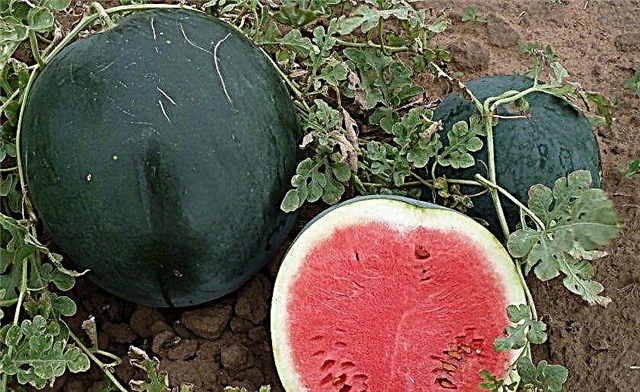
- Lunar. It has a bright yellow color of pulp, which is completely unusual for a watermelon. Hybrid, will delight you with a delicate taste with light notes of lemon and honey. The average weight is 3 kg. Ripening period - up to 80 days, berries are practically not suitable for transportation.

- Chill. It is a late variety, the fruits of which reach 7 kg, the shape is oval. Thickened peel, with green and black stripes, red flesh, sugar. It is perfectly stored and transfers transportation over long distances.

- Volzhanin. It has a thick peel painted with yellow and black stripes. Ripens in mid-August. The pulp is sweet, with a granular structure, contains 8% sugar. The weight of the ripe fruit is up to 16 kg, yield from 1 ha - up to 35 tons.

- Ataman F1. Mid-season variety, has an oval shape. Weight is up to 10 kg, skin color is dark green with light yellow stripes. It has a long shelf life - up to 35 days, is immune to diseases.

Methods for growing watermelons
There are two ways to grow watermelon:
- using seedlings;
- seeds.
- Seedling method has several advantages:
- early ripening of the first berries;
- plants are less susceptible to disease and damage from pests.
With the seedling method, you need to take a container for sowing seeds and fill it with soil substrate from the following components:
- turf land - 2 kg;
- peat - 1 kg;
- sand - 1 kg.
Important! When growing seedlings, it is necessary to observe the temperature regime. Germination should take place at a temperature of + 25 ° C to + 30 ° C. During the growth period, the temperature is reduced to + 20 ° C in the daytime and + 16 ° C in the night.
Then plant watermelon seeds in the soil to a depth of 1 cm, observing a distance between seeds of 3 cm. Seeds are sown in late April or early May, and seedlings can be transplanted into the soil in late May or early June. Shoots will appear in 7-10 days. Planting seedlings in open ground is carried out 20 days after germination. A week before transplanting seedlings, it is necessary to conduct a procedure for its hardening. To do this, containers with plants are taken out for 2-3 hours on the veranda, gradually increasing the stay of plants in cooler conditions up to 24 hours. Then the containers can be taken outside, also gradually increasing the time the plants stay outdoors. In regions with warm climates, watermelons can be grown by planting seeds in open ground. Before planting, you must first soak the planting material in a growth stimulator for 12 hours. Planting on the beds is carried out in late May, when the air temperature reaches + 23 ° C.
Then the containers can be taken outside, also gradually increasing the time the plants stay outdoors. In regions with warm climates, watermelons can be grown by planting seeds in open ground. Before planting, you must first soak the planting material in a growth stimulator for 12 hours. Planting on the beds is carried out in late May, when the air temperature reaches + 23 ° C.
Important! A ripe watermelon should have a yellow spot on its side, which indicates that the fruit ripened on the melon under the sun.
In the open ground
To grow watermelon in open ground, it is necessary to prepare the soil for planting in advance. The upper fertile layer must be fertilized with humus in the amount of 10 kg per 3 m². The procedure is carried out by simultaneously digging the soil to a depth of 20-30 cm.
Sowing seeds:
- make a hole 10 cm deep;
- put a seed at the bottom of the hole and cover it with earth;
- form a bed in the form of a circle with a diameter of about 40 cm;
- pour a bed of 1-2 liters of water at room temperature;
- the distance between the holes should be 70 cm, and between the rows of 120-150 cm.

Indoors
In order to grow watermelons in greenhouse conditions, it is necessary to choose the right variety for planting. Selection criteria:
- an early variety can perfectly ripen in greenhouse conditions;
- the variety should be selected according to the region and its climatic characteristics;
- seed material for planting should be fresh;
- in a greenhouse, varieties of medium-sized watermelons develop better.
Before planting seedlings in greenhouse conditions, it is necessary to prepare a soil mixture. The substrate is made up of:
- chernozem 5 kg;
- humus 2.5 kg;
- potassium sulfate 15 g;
- nitrogen fertilizer 30 g;
- phosphorus 60 g
The amount of ingredients is indicated per 1 m² of soil. The beds for planting seedlings are made with a depth of 10-15 cm, at a distance of 70 cm from each other and observe the row spacing of 80 cm. The seedlings are poured with water to make it easier to remove plants without damaging the roots. Each sprout is separately placed in the holes together with an earthen lump, top-up with earth and rammed. Each bed with planted sprouts must be poured with 2 liters of warm (+ 20 ° C) water immediately after planting.
Video: planting watermelon seedlings in a greenhouse
Scopes of watermelon
Due to its excellent taste and useful properties, the product is widely used:
- in cooking;
- in cosmetology;
- in alternative treatment of diseases.
Watermelon is an excellent dietary product, therefore, indispensable in the menu for weight loss. The pulp of watermelon is included in the diet of pregnant and lactating women. Due to the high content of folic acid, the berry contributes to the proper development of the fetus in early pregnancy and reduces the risk of anemia. During breastfeeding, the use of watermelon pulp will help improve lactation. The product is a natural aphrodisiac, and is also indispensable for problems of prostatitis. Daily consumption of 100 g of pulp for 3 weeks improves blood flow to the genitals of men, and can also have an antispasmodic effect when painful urination.
During breastfeeding, the use of watermelon pulp will help improve lactation. The product is a natural aphrodisiac, and is also indispensable for problems of prostatitis. Daily consumption of 100 g of pulp for 3 weeks improves blood flow to the genitals of men, and can also have an antispasmodic effect when painful urination.
In cooking
Most often, watermelon is eaten fresh. In addition, it is added to salads and consumed in the form of juice. In a salted or pickled form, the berry goes well with second and first courses. Candied fruit is made from watermelon peel, and the pulp is perfect for making jam and cocktails.
In cosmetology
In cosmetology, watermelon is used as a refreshing and antioxidant, which helps to give the skin freshness and has a rejuvenating effect. The easiest way to refresh the skin is to take 50 g of pulp and apply on the skin of the face and neck, after 15 minutes rinse off the mask and pat the skin with a paper towel. To reduce the effect of ultraviolet rays on the skin in the summer heat, you need to drink 200 g of freshly squeezed watermelon juice for a month.
Mask for dry skin:
- Mix in one container 5 g of olive oil, 10 g of honey and 30 g of watermelon pulp.
- Apply the mask on the face and neck with light massage movements.
- After 20 minutes, rinse with warm water.
- The mask can be repeated 2 times a week.

Mask for skin against oily sheen:
- Mix 30 g of honey, 10 g of lemon juice and 20 g of watermelon.
- Apply the mask to the skin of the face and neck for 20 minutes before bedtime.
- Rinse with warm water and pat dry with a paper towel, avoiding strong friction.
- The mask is used if it is necessary to get rid of oily sheen, but not more often than 2 times a week.
Mask for improving hair growth:
- Mix 40 g of honey and 50 g of watermelon pulp.
- Apply the resulting slurry to the hair roots.
- Hold the mask for 45 minutes, then rinse with warm water.
In folk medicine
Beneficial substances in the berry are used for:
- removing bile from the body;
- extermination of worms;
- anti-inflammatory effect;
- strengthening immunity;
- diuretic effect.
In the treatment of helminthiasis and urolithiasis, it is necessary to grind 100 g of seeds in a blender and pour 1 liter of water, boil over medium heat for an hour. The broth should be infused for 8 hours, after which it must be taken 3 times a day, 150 g before meals. Treatment and prevention are carried out for 10 days. In case of heat and sore throat, you should drink 200 ml of watermelon juice 3 times a day, which will help reduce body temperature and make up for fluid loss in the body. Gargling with freshly squeezed watermelon juice will reduce pain and have an anti-inflammatory effect. For intoxication, you need to drink 2.5 liters of watermelon juice per day. This will help remove toxins from the body, and also normalizes metabolic processes.
In case of heat and sore throat, you should drink 200 ml of watermelon juice 3 times a day, which will help reduce body temperature and make up for fluid loss in the body. Gargling with freshly squeezed watermelon juice will reduce pain and have an anti-inflammatory effect. For intoxication, you need to drink 2.5 liters of watermelon juice per day. This will help remove toxins from the body, and also normalizes metabolic processes.
Rules for the selection and storage of the fetus
To choose a ripe and sweet fruit, you should pay attention to a number of signs:
- the peel should be even and smooth, without chips, scratches, diaper rash;
- another indicator of ripeness is the hardness of the peel when pressed with a fingernail;
- the tail of a ripe watermelon should be shriveled;
- if the ripe fruit is knocked, it will make a loud, vibrating sound;
- from the berries should come a gentle, sweet aroma.
To ensure long-term safety of striped berries, it is necessary to create optimal conditions in the storage room. This place should be:
- darkened;
- cool, with a temperature from + 4 ° С to + 8 ° С;
- with good ventilation;
- with humidity 70%.

Long-term storage methods:
- Wrap the berry with a thick cloth and hang it under the ceiling in a dark, cool place.
- Storage in wooden crates is the best choice for a large number of fruits.It is necessary to cover the bottom of the box with a 20 cm layer of straw, lay out watermelons, fill the space between the fruits with straw and cover with a dense cloth on top.
- Storage in the sand. You need to choose a suitable box, fill the bottom with sand, set the watermelon so that its tail is at the bottom, and fill the tank with sand to the top.
Subject to conditions, watermelons can be stored for up to 4 months. Only moderately ripe fruits are left for long-term preservation, since unripe berries cannot be ripened, and besides, they will have poor taste. Be sure to have a soft litter under the pumpkin, and it is also necessary to protect the berries from contact with each other. In the refrigerator, the whole berry can be stored for up to 1.5 months at an optimum temperature of up to + 5 ° C, and the cut fruit has a shelf life of no more than 48 hours. Watermelon is one of the most popular products with a wide range of applications. It is sweet and tasty, perfectly quenches thirst. And thanks to the vitamins and minerals that make up it, it is indispensable in the treatment of many diseases.
In the refrigerator, the whole berry can be stored for up to 1.5 months at an optimum temperature of up to + 5 ° C, and the cut fruit has a shelf life of no more than 48 hours. Watermelon is one of the most popular products with a wide range of applications. It is sweet and tasty, perfectly quenches thirst. And thanks to the vitamins and minerals that make up it, it is indispensable in the treatment of many diseases.


 The peel has a dark, almost black color, weight reaches 2 kg, a spherical shape. Among the disadvantages of the variety are poor transportability.
The peel has a dark, almost black color, weight reaches 2 kg, a spherical shape. Among the disadvantages of the variety are poor transportability.




